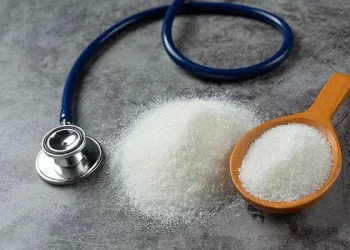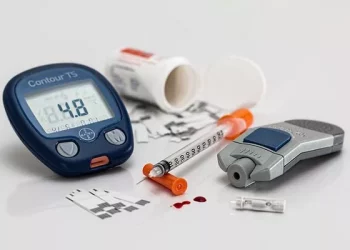Type 2 diabetes is a condition that affects how your body processes blood sugar, also known as glucose. In people with type 2 diabetes, the body either resists the effects of insulin or does not produce enough insulin to maintain normal glucose levels. Since food has a direct impact on blood sugar, managing your diet becomes essential for controlling this condition.
Many patients ask, “What can I not eat with type 2 diabetes?” The answer is not always simple. It depends on the food’s effect on glucose, the person’s level of insulin resistance, and their overall health. However, there are some foods that nearly all people with type 2 diabetes should avoid or limit.
Why Food Matters in Type 2 Diabetes
When you eat, your body breaks down carbohydrates into glucose. This glucose enters the bloodstream, raising your blood sugar. For people with type 2 diabetes, this rise can be harmful if not managed correctly. Eating the wrong foods can cause blood glucose spikes, leading to complications like nerve damage, kidney disease, or heart problems.
Monitoring your diet helps to keep your blood sugar in a healthy range. A diabetic diet focuses on whole foods, low sugar, healthy fats, and smart carbohydrates. Knowing which foods to avoid is the first step to building a balanced plan.
Foods You Should Avoid with Type 2 Diabetes
1. Sugary Beverages
Soda, energy drinks, sweet teas, and fruit juices contain high amounts of added sugars. These drinks provide a quick spike in blood glucose levels without offering any nutritional benefits. Even 100% fruit juices, though natural, can cause rapid increases in blood sugar.
Choose water, unsweetened tea, or beverages with no added sugar instead. Some drinks may say “diet” or “sugar-free,” but they often contain artificial sweeteners. While these are better than sugar, it’s still wise to consume them in moderation.
2. Refined Carbohydrates
White bread, white rice, and pasta made from refined wheat lack fiber. These foods are quickly broken down into glucose, raising blood sugar levels fast. They also don’t make you feel full for long, which may lead to overeating.
Whole grain options, such as brown rice, whole wheat pasta, and barley, are better. They digest slower and help maintain steady glucose levels.
3. Baked Goods and Sweets
Doughnuts, cakes, cookies, and pastries are made with refined flour and sugar. Many also contain unhealthy fats. These types of foods not only cause blood sugar spikes but also increase the risk of obesity, which is linked to type 2 diabetes.
Occasional indulgence is acceptable, but frequent consumption will disrupt blood sugar control. Look for desserts made with alternative sweeteners and whole grains if you crave something sweet.
4. Fried Foods
Fried foods like French fries, fried chicken, and battered fish are loaded with unhealthy fats and carbs. They may slow down digestion but often lead to insulin resistance over time. The oil used in frying also adds unnecessary calories.
Try grilled, baked, or air-fried alternatives to satisfy your craving for something crispy.
5. Full-Fat Dairy Products
Whole milk, cream, and full-fat cheeses are high in saturated fat. This type of fat can worsen insulin resistance and increase the risk of cardiovascular disease, which is already higher in people with diabetes.
Low-fat or non-fat dairy options, including Greek yogurt or skim milk, are healthier choices that still provide essential nutrients like calcium and protein.
6. Processed Meats
Meats like bacon, sausages, hot dogs, and deli meats often contain preservatives and are high in sodium and saturated fats. These increase inflammation and risk of heart problems.
Lean protein options like grilled chicken, turkey, tofu, and fish are better for maintaining healthy blood sugar and heart function.
7. Packaged Snacks
Chips, crackers, and snack bars might seem convenient, but many are high in refined carbs, unhealthy fats, and sugar. These foods lack fiber and nutrients and often lead to overeating without satisfying hunger.
Instead, try raw nuts, sliced vegetables, or whole grain crackers with hummus for a better snacking experience.
8. Breakfast Cereals
Even cereals labeled as “healthy” can contain added sugars and refined grains. Starting your day with a sugary cereal may cause a quick rise in blood sugar and set the stage for cravings later.
Choose oatmeal, bran cereals, or homemade granola with no added sugar. Add a handful of nuts or berries for flavor and nutrition.
9. Alcohol
Alcohol can disrupt blood sugar levels in different ways. Beer and sweet wines contain sugars that can raise glucose quickly. On the other hand, drinking alcohol on an empty stomach may cause a dangerous drop in blood sugar.
Limit alcohol to one drink per day for women and two for men. Always consume it with food and monitor your blood sugar before and after drinking.
10. High-Sodium Foods
Foods like canned soups, frozen dinners, and salty snacks contain a lot of sodium. Too much sodium can raise blood pressure, which is a serious concern for people with diabetes.
Check food labels and aim for less than 2,300 mg of sodium per day. Choose fresh, homemade meals when possible.
Foods to Limit Rather Than Eliminate
Not all foods need to be cut out completely. Some can be enjoyed in small portions, especially when paired with fiber, protein, and healthy fats. Examples include:
- White potatoes (boiled, not fried)
- Fresh fruit (in moderate amounts)
- Whole grain bread (watch the portion size)
- Dark chocolate (small amounts, 70% cocoa or higher)
Balancing meals with lean protein and non-starchy vegetables helps reduce the impact on blood sugar.
Tips for Healthy Eating with Type 2 Diabetes
1. Choose Whole Foods
Whole grains, lean proteins, fresh vegetables, and healthy fats support stable blood sugar levels. The fewer processed foods in your diet, the better.
2. Practice Portion Control
Eating too much of even healthy foods can raise glucose levels. Learn to use measuring cups or a food scale. Know what a true serving size looks like.
3. Spread Carbs Throughout the Day
Rather than having a large amount of carbohydrates in one meal, spread them out. This helps maintain a more even blood sugar pattern.
4. Read Labels Carefully
Always check the nutrition facts on packaged food. Pay attention to total carbohydrates, fiber content, and added sugars.
5. Monitor Blood Sugar
Keeping track of how your body responds to different meals is key. Regular blood sugar monitoring can help you adjust your diet in real time and avoid spikes or crashes.
Common Myths About Diabetes and Food
1. “You Can’t Eat Any Sugar”
You can still enjoy small amounts of sugar, especially when it is part of a balanced meal. The key is moderation and knowing how it affects your body.
2. “Fruit Is Off-Limits”
Fresh fruit contains natural sugars but also fiber and antioxidants. Choose low-glycemic fruits like berries, apples, or pears, and eat them in moderation.
3. “A Diabetic Diet Is Boring”
With the right knowledge, a diabetic diet can be diverse, flavorful, and enjoyable. Many herbs, spices, and food combinations can add excitement without increasing glucose.
Conclusion: Make Smarter Food Choices
Knowing what you cannot eat with type 2 diabetes empowers you to make better choices. While it might seem difficult at first, adopting a healthy eating pattern will help you feel better, control your blood sugar, and prevent complications.
Focus on real, whole foods. Avoid added sugars, refined carbs, and unhealthy fats. Use diabetic diet guidelines and blood sugar monitoring to track your progress.
Small changes can make a big difference in your health. Your plate is your power—use it wisely.
Related topics:
What Is the Best Fruit to Eat for Prediabetes?

























